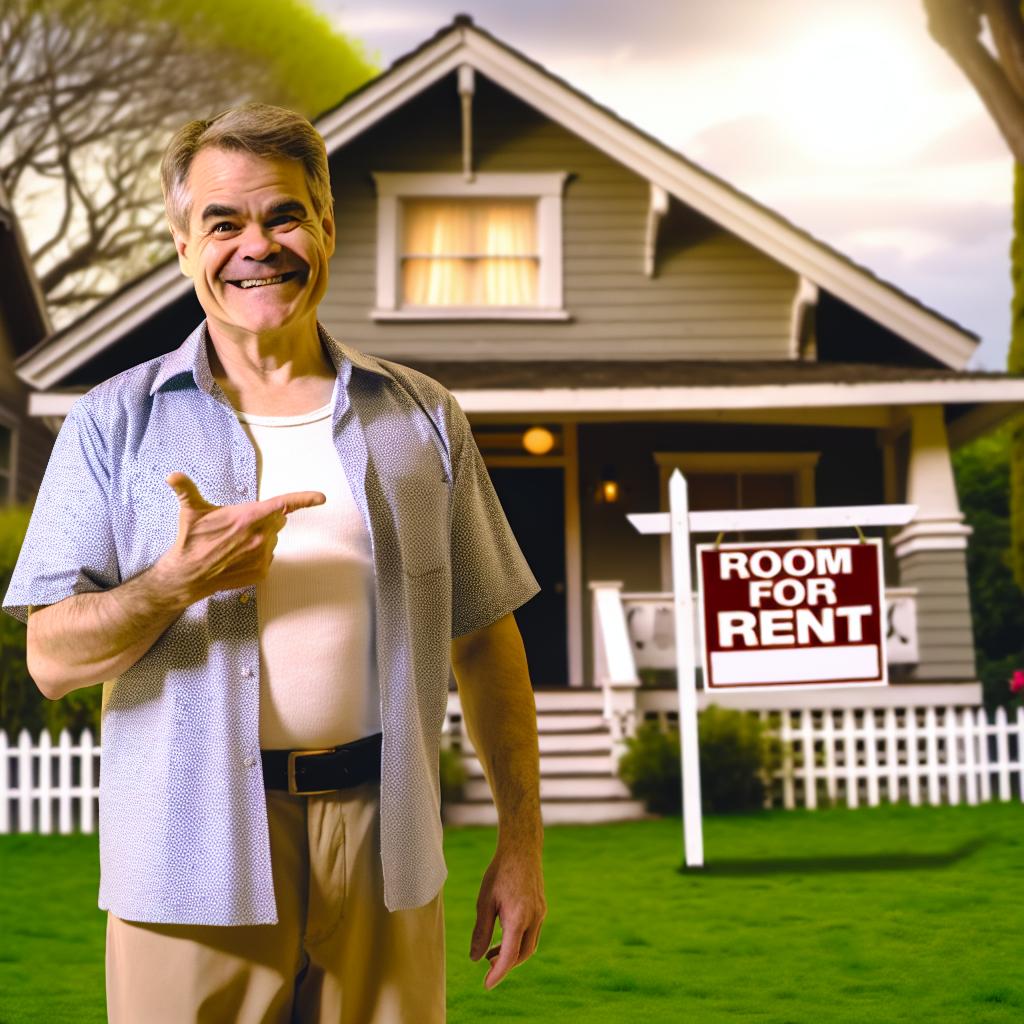Understanding Lease Agreements
Key Terminology
A lease agreement outlines the terms between a landlord and a tenant.
This document serves as a legal contract, ensuring both parties understand their rights.
Key terms include “rent,” “security deposit,” and “duration of lease.”
Rent is the amount the tenant pays for occupying the room.
A security deposit protects the landlord against potential damages.
The duration of the lease defines how long the agreement lasts.
Essential Concepts
Lease agreements often include specific conditions and rules.
Such conditions may govern pets, smoking, or use of shared spaces.
Understanding these concepts is crucial before signing the lease.
Moreover, both parties must be aware of renewal terms.
Renewal terms specify how the lease can be extended after expiration.
Additional Considerations
Look for clauses about maintenance and repairs in the lease.
This ensures clarity on who is responsible for what.
Also, check for policies on early termination of the lease.
Such policies can affect financial obligations if a tenant moves out early.
Lastly, ensure the lease complies with local laws and regulations.
This compliance protects both the landlord and tenant’s rights.
Rights and Responsibilities of Homeowners Under Lease Agreements
Understand Your Rights
Homeowners possess specific rights when renting a room.
You have the right to maintain a safe environment for yourself and your tenant.
Additionally, you can establish rules regarding shared spaces.
You are entitled to receive timely rent payments as outlined in the lease.
This means you should have a clear payment schedule agreed upon.
Furthermore, you can evict a tenant for breach of lease terms.
It is crucial to follow proper legal procedures during eviction.
Overall, knowing your rights helps protect your interests.
Fulfill Your Responsibilities
As a homeowner, you carry significant responsibilities under lease agreements.
You must provide a habitable living space for your tenant.
This includes ensuring plumbing, heating, and electrical systems work properly.
Also, you should address necessary repairs promptly.
Moreover, you must respect the tenant’s right to privacy.
Thus, avoid entering the rented room without proper notice.
You are responsible for adhering to local housing laws and regulations.
This helps prevent legal issues that can arise from non-compliance.
Communicate Effectively
Strong communication fosters a positive landlord-tenant relationship.
Regularly discuss any concerns or issues that arise.
This encourages mutual understanding and cooperation.
Document all communications to keep a clear record.
You should also outline expectations in the lease agreement.
This reduces misunderstandings and sets clear boundaries.
Utilize Written Agreements
A written lease agreement is essential for clarity and protection.
Clearly outline terms such as rent amount, payment methods, and due dates.
Include specific details about shared responsibilities and common areas.
A well-structured lease minimizes potential disputes.
Additionally, consider including terms for automatic renewals or termination procedures.
This ensures all parties are aware of their commitments.
Be Prepared for Changes
Sometimes circumstances change while a lease is active.
Be ready to negotiate new terms if needed.
Both you and your tenant should agree on any modifications in writing.
Review lease expiration dates to manage future arrangements effectively.
Also, stay informed about local rental laws that may evolve.
This helps you adapt to changes that could impact your lease agreements.
Types of Lease Agreements: Fixed-Term vs. Month-to-Month
Understanding Fixed-Term Lease Agreements
A fixed-term lease agreement lasts for a specific duration.
This duration typically spans six months to one year.
Both landlords and tenants commit to the lease length.
During this period, terms remain consistent and reliable.
Generally, fixed-term leases offer stability for tenants.
Landlords appreciate predictable income during this time.
Breaking this lease can lead to penalties or fees.
Both parties should understand the lease’s expiration process.
Exploring Month-to-Month Lease Agreements
A month-to-month lease offers more flexibility than a fixed-term lease.
Tenants can renew or terminate the lease each month.
This option suits those who seek short-term living arrangements.
Landlords benefit as they can adjust rental prices more frequently.
However, this arrangement might lead to periodic changes in occupants.
Notice periods for termination usually vary by local laws.
Understanding these rules is essential for both parties.
Comparing Fixed-Term and Month-to-Month Leases
Fixed-term leases provide predictability in rental agreements.
Conversely, month-to-month leases offer greater flexibility.
Both agreements have unique advantages and challenges.
Choosing the right option depends on individual circumstances.
Consider factors like personal lifestyle and financial stability.
Ultimately, clear communication between parties is crucial.
This ensures all expectations are clearly understood.
You Might Also Like: Lease Agreements for Preventing Tenant Disputes
How to Draft a Lease Agreement: Essential Clauses to Include
Identifying Parties Involved
Your lease agreement must clearly identify all parties involved.
This includes the landlord and the tenant renting the room.
Ensure you include full names and contact information.
Defining Rental Terms and Conditions
Specify the rental price and the payment schedule.
Include details about security deposits and late fees.
Outline the duration of the lease, whether it is month-to-month or fixed-term.
Describing the Property
Clearly describe the specific room being rented.
Include details about shared areas, such as kitchens or bathrooms.
Provide a condition report to avoid disputes later.
Rights and Responsibilities of Tenants
Outline the rules and responsibilities for tenants.
This can include guidelines about noise, cleanliness, and guest policies.
Specify restrictions on alterations or improvements to the room.
Landlord’s Responsibilities
Clearly state what responsibilities the landlord has.
This includes maintenance and repair obligations.
Provide a timeframe for addressing issues like plumbing problems.
Termination Conditions
Define the conditions under which the lease can be terminated.
Include notice periods for both tenants and landlords.
Outline any penalties for early termination if necessary.
Dispute Resolution Procedures
It’s wise to have a process for resolving disputes.
Consider including mediation or arbitration clauses.
Clearly state the method of communication for issues that arise.
Legal Considerations
Ensure your lease complies with local housing laws.
Consult with a legal expert if necessary to avoid issues.
Always have a signed copy from all parties to enforce the agreement.
Explore Further: Marketing Strategies for Filling Rental Vacancies in Competitive Markets
Setting Rent
Understanding Your Market
Research your local rental market carefully.
Identify similar rooms available for rent in your area.
Assess the prices of these listings to gauge competition.
Consider factors like location and amenities when comparing prices.
Determining Your Costs
Calculate all costs associated with renting a room.
Include mortgage payments, utilities, and maintenance expenses.
Don’t forget to factor in property taxes and insurance premiums.
Make sure to account for any possible vacancies as well.
Setting a Competitive Price
Use your research to set an attractive price for tenants.
Ensure the price reflects both the demand and your expenses.
Consider starting with a slightly lower price to attract interest.
This approach can help you build a tenant base quickly.
Offering Incentives
Incentives can make your room more appealing.
Consider including utilities in the rent price.
You might also offer a one-time discount for early sign-ups.
Flexible lease terms can also attract more potential tenants.
Reviewing and Adjusting the Rent
Regularly review your rent prices as the market evolves.
Stay informed about changes in your local rental market.
Adjust your pricing based on tenant feedback and occupancy rates.
Maintaining competitiveness ensures continual interest in your rental.
Explore Further: Why Professional Photography Matters in Rental Property Marketing

Screening Potential Tenants: Background Checks and References
The Importance of Tenant Screening
Tenant screening is crucial for landlords renting a room in their home.
It helps ensure a safe and peaceful living environment.
Moreover, thorough screening minimizes potential disputes.
Conducting Background Checks
Start by obtaining written consent from the prospective tenant for a background check.
This step respects privacy and complies with legal regulations.
Use a reputable screening service to check criminal history.
Additionally, verify credit history to assess financial responsibility.
Always review the report carefully before making a decision.
Gathering References
Request references from previous landlords or roommates.
Contacting these references reveals the tenant’s behavior and reliability.
Ask specific questions about payment history and property care.
Furthermore, inquire about their general character and demeanor.
Additional Considerations
Consider conducting face-to-face interviews as part of the screening process.
Interviews can provide insights that paperwork alone may not offer.
Trust your instincts; if something feels off, it might be best to reconsider.
Keeping clear communication throughout the process is essential.
This helps build a rapport and sets expectations for both parties.
Uncover the Details: Property Inspections for Home Buyers
Navigating Legal Requirements: Local and State Laws
Understanding Local Laws
Homeowners should know their local laws regarding rental agreements.
Local jurisdictions often have specific regulations for renting rooms.
Research the landlord-tenant laws in your city or county.
Many cities require landlords to register rental properties.
Failure to comply with these laws may lead to penalties.
State Regulations
Each state has its own set of rental laws.
Understanding these laws can protect both landlords and tenants.
Common state regulations include security deposit limits and eviction processes.
Review your state’s statutes for guidance on rental procedures.
Ignoring state laws can result in legal complications.
Creating a Compliant Lease Agreement
A well-drafted lease agreement helps clarify expectations.
Include essential elements such as rent amount, duration, and terms of use.
Clearly outline rules about shared spaces and utilities.
Establish policies regarding pets, smoking, and guests.
Ensure both parties sign the lease to affirm their agreement.
Consulting Legal Resources
Consider seeking legal advice for complex situations.
Local housing agencies can provide valuable resources and guidance.
Various online platforms offer sample lease agreements for reference.
Utilizing these resources can enhance your lease’s legal standing.
Keeping informed of changes in laws is essential for compliance.
Handling Disputes: Effective Communication and Conflict Resolution
Importance of Open Communication
Open communication lays the foundation for resolving disputes.
It allows both parties to express their feelings clearly.
This can prevent misunderstandings before they escalate.
Furthermore, being transparent strengthens the tenant-landlord relationship.
Setting Up a Communication Plan
A communication plan helps establish expectations right away.
Set specific times for check-ins to discuss any issues.
Use various methods like emails, calls, or in-person meetings.
Adapt your communication style to suit personal preferences.
Active Listening Techniques
Active listening is essential in any conversation.
It enables each party to feel heard and valued.
Repeat back key points to show you are engaged.
Ask open-ended questions to encourage deeper dialogue.
Recognizing the Root Causes of Disputes
Disputes often arise from unmet expectations.
Identify the core issues to address them effectively.
Document incidents objectively to provide context.
Reflect on whether assumptions may have contributed.
Utilizing Mediation Services
Mediation can be beneficial for contentious disputes.
Consider hiring a neutral third party to facilitate discussions.
This can provide an outside perspective to both parties.
Often, mediators help find compromises that work for everyone.
Creating a Written Agreement
A written agreement can clarify dispute resolutions.
Document all terms that you’ve mutually agreed upon.
Ensure to include consequences for future infractions.
This can prevent similar issues from arising down the line.
Reflecting on the Resolution Process
After resolving the conflict, reflect on the process.
Evaluate what worked well and what didn’t.
This reflection can inform future interactions positively.
Continuous improvement strengthens future communication avenues.
Additional Resources
Create a Certificate of Rent Paid (CRP) | Minnesota Department of …




